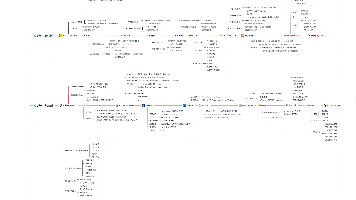人工智能如何重塑现代天文学:从数据挖掘到宇宙发现
摘要: 人工智能正在变革天文学研究,帮助科学家处理海量观测数据并发现新天体。现代巡天项目每晚产生约20TB数据,AI通过数据预处理、异常值过滤和标准化实现高效分析。深度学习模型(如CNN)在天体图像分类中准确率超越传统方法。在系外行星探测中,AI处理光变曲线数据,提取统计特征并识别凌星信号,显著提高了行星发现效率。这些技术为天文学研究提供了强大工具,推动人类对宇宙的认知边界不断扩展。
人工智能如何重塑现代天文学:从数据挖掘到宇宙发现
随着望远镜技术和观测手段的飞速发展,天文学已进入海量数据时代,人工智能正成为解析宇宙奥秘的关键工具。本文将深入探讨机器学习与深度学习在天文学各领域的革命性应用,揭示AI如何助力人类探索宇宙的最远边疆。
一、天文大数据挑战与AI解决方案
1.1 现代天文学的数据洪流
大型巡天项目如LSST(大型综合巡天望远镜)每晚产生约20TB数据,相当于整个斯隆数字巡天(SDSS)10年数据量的两倍。面对如此规模的数据,传统分析方法已无能为力。AI技术提供了可扩展的解决方案:
import numpy as np
import pandas as pd
from astropy.io import fits
from sklearn.preprocessing import StandardScaler
from sklearn.model_selection import train_test_split
import tensorflow as tf
class AstronomicalDataProcessor:
def __init__(self, data_path):
self.data_path = data_path
self.scaler = StandardScaler()
def load_fits_data(self, file_name):
"""加载FITS格式天文数据"""
with fits.open(f'{self.data_path}/{file_name}') as hdul:
data = hdul[1].data
return pd.DataFrame(data)
def preprocess_photometric_data(self, df, features):
"""预处理测光数据"""
# 处理缺失值
df = df.dropna(subset=features)
# 过滤异常值
for feature in features:
mean = df[feature].mean()
std = df[feature].std()
df = df[(df[feature] > mean - 5*std) & (df[feature] < mean + 5*std)]
# 标准化特征
df[features] = self.scaler.fit_transform(df[features])
return df
# 示例使用
processor = AstronomicalDataProcessor('/path/to/astronomy/data')
df = processor.load_fits_data('sdss_dr16.fits')
features = ['u', 'g', 'r', 'i', 'z', 'redshift', 'spectroflux']
df_processed = processor.preprocess_photometric_data(df, features)
1.2 天体识别与分类的深度学习革命
卷积神经网络(CNN)在天体图像分类中表现出色,准确率超越传统方法:
import tensorflow as tf
from tensorflow.keras import layers, models
from tensorflow.keras.applications import EfficientNetB0
def create_astronomical_cnn(input_shape=(128, 128, 3), num_classes=10):
"""创建用于天体图像分类的CNN模型"""
model = models.Sequential([
# 特征提取层
layers.Conv2D(32, (3, 3), activation='relu', input_shape=input_shape),
layers.MaxPooling2D((2, 2)),
layers.Conv2D(64, (3, 3), activation='relu'),
layers.MaxPooling2D((2, 2)),
layers.Conv2D(128, (3, 3), activation='relu'),
layers.MaxPooling2D((2, 2)),
# 分类层
layers.Flatten(),
layers.Dense(512, activation='relu'),
layers.Dropout(0.5),
layers.Dense(num_classes, activation='softmax')
])
return model
# 使用预训练模型进行迁移学习
def create_transfer_learning_model(input_shape=(150, 150, 3), num_classes=5):
base_model = EfficientNetB0(weights='imagenet',
include_top=False,
input_shape=input_shape)
# 冻结基础模型层
base_model.trainable = False
model = models.Sequential([
base_model,
layers.GlobalAveragePooling2D(),
layers.Dense(256, activation='relu'),
layers.Dropout(0.5),
layers.Dense(num_classes, activation='softmax')
])
return model
# 编译模型
input_shape = (128, 128, 3)
num_classes = 5 # 恒星、星系、类星体、小行星、未知
model = create_astronomical_cnn(input_shape, num_classes)
model.compile(optimizer='adam',
loss='sparse_categorical_crossentropy',
metrics=['accuracy'])

二、系外行星探测中的AI技术
2.1 凌日法数据处理
开普勒和TESS任务通过监测恒星亮度变化寻找系外行星,AI极大提高了行星信号检测的灵敏度:
import lightkurve as lk
from scipy.signal import find_peaks
from sklearn.ensemble import RandomForestClassifier
from xgboost import XGBClassifier
class ExoplanetDetector:
def __init__(self):
self.rf_model = RandomForestClassifier(n_estimators=100)
self.xgb_model = XGBClassifier()
def process_light_curve(self, target_name, sector=None):
"""处理光变曲线数据"""
# 下载光变曲线数据
lc_collection = lk.search_lightcurve(target_name, sector=sector)
lc = lc_collection.download().remove_nans().normalize()
return lc
def extract_features(self, lc, window_size=100):
"""从光变曲线中提取特征"""
flux = lc.flux.value
time = lc.time.value
features = {}
# 统计特征
features['mean'] = np.mean(flux)
features['std'] = np.std(flux)
features['skew'] = pd.Series(flux).skew()
features['kurtosis'] = pd.Series(flux).kurtosis()
# 寻找可能的凌星信号
flattened_flux = flux / np.median(flux)
dips = 1 - flattened_flux
# 寻找峰值(凌星事件)
peaks, properties = find_peaks(dips, height=0.001, distance=window_size)
if len(peaks) > 0:
features['dip_depth'] = np.max(dips[peaks])
features['dip_duration'] = np.mean(properties['widths']) if 'widths' in properties else 0
features['num_dips'] = len(peaks)
else:
features['dip_depth'] = 0
features['dip_duration'] = 0
features['num_dips'] = 0
return features
def train_detection_model(self, features_list, labels):
"""训练系外行星检测模型"""
X = np.array([list(f.values()) for f in features_list])
y = np.array(labels)
# 训练随机森林模型
self.rf_model.fit(X, y)
# 训练XGBoost模型
self.xgb_model.fit(X, y)
return self.rf_model.score(X, y), self.xgb_model.score(X, y)
# 使用示例
detector = ExoplanetDetector()
lc = detector.process_light_curve("TIC 100100827", sector=1)
features = detector.extract_features(lc)
2.2 径向速度法中的信号处理
import numpy as np
from scipy.optimize import curve_fit
from sklearn.gaussian_process import GaussianProcessRegressor
from sklearn.gaussian_process.kernels import RBF, WhiteKernel
class RadialVelocityAnalyzer:
def __init__(self):
self.kernel = 1.0 * RBF(length_scale=1.0) + WhiteKernel(noise_level=1.0)
self.gp = GaussianProcessRegressor(kernel=self.kernel)
def keplerian_model(self, t, P, K, e, ω, T0, γ):
"""开普勒轨道模型"""
# 计算平均近点角
M = 2 * np.pi * (t - T0) / P
# 解开普勒方程求偏近点角
E = self.solve_kepler_equation(M, e)
# 计算真近点角
ν = 2 * np.arctan2(np.sqrt(1 + e) * np.sin(E / 2),
np.sqrt(1 - e) * np.cos(E / 2))
# 计算径向速度
rv = γ + K * (np.cos(ν + ω) + e * np.cos(ω))
return rv
def solve_kepler_equation(self, M, e, tolerance=1e-8, max_iter=100):
"""数值解法开普勒方程 E - e*sin(E) = M"""
E = M.copy()
for _ in range(max_iter):
delta_E = (E - e * np.sin(E) - M) / (1 - e * np.cos(E))
E -= delta_E
if np.max(np.abs(delta_E)) < tolerance:
break
return E
def fit_radial_velocity_data(self, time, rv, rv_err, initial_params):
"""拟合径向速度数据"""
popt, pcov = curve_fit(
self.keplerian_model,
time, rv,
p0=initial_params,
sigma=rv_err,
bounds=(
[0, 0, 0, -2*np.pi, np.min(time), -np.inf],
[np.inf, np.inf, 0.99, 2*np.pi, np.max(time), np.inf]
)
)
return popt, pcov
def gaussian_process_modeling(self, time, rv, rv_err):
"""使用高斯过程建模恒星活动信号"""
X = time.reshape(-1, 1)
y = rv
self.gp.fit(X, y)
# 预测并去除恒星活动信号
time_pred = np.linspace(np.min(time), np.max(time), 1000).reshape(-1, 1)
rv_pred, sigma = self.gp.predict(time_pred, return_std=True)
return rv_pred, sigma
# 使用示例
rv_analyzer = RadialVelocityAnalyzer()
time = np.array([...]) # 观测时间
rv = np.array([...]) # 径向速度测量值
rv_err = np.array([...]) # 测量误差
# 初始参数猜测:周期、K振幅、偏心率、近心点经度、历元、系统速度
initial_params = [10.0, 5.0, 0.1, 0.5, time[0], 0.0]
popt, pcov = rv_analyzer.fit_radial_velocity_data(time, rv, rv_err, initial_params)

三、宇宙学模拟与结构形成
3.1 N体模拟与深度学习加速
传统宇宙学N体模拟计算成本极高,AI方法可以大幅加速:
import torch
import torch.nn as nn
import torch.nn.functional as F
from torch.utils.data import Dataset, DataLoader
class CosmologicalSimulator(nn.Module):
def __init__(self, input_dim=3, hidden_dim=512, output_dim=3):
super().__init__()
self.encoder = nn.Sequential(
nn.Linear(input_dim, hidden_dim),
nn.ReLU(),
nn.Linear(hidden_dim, hidden_dim),
nn.ReLU(),
nn.Linear(hidden_dim, hidden_dim // 2)
)
self.dynamics = nn.Sequential(
nn.Linear(hidden_dim // 2, hidden_dim),
nn.ReLU(),
nn.Linear(hidden_dim, hidden_dim),
nn.ReLU(),
nn.Linear(hidden_dim, hidden_dim // 2)
)
self.decoder = nn.Sequential(
nn.Linear(hidden_dim // 2, hidden_dim),
nn.ReLU(),
nn.Linear(hidden_dim, output_dim)
)
def forward(self, x, t):
# 编码初始条件
encoded = self.encoder(x)
# 时间演化
time_embedded = encoded + self.positional_encoding(t)
dynamics_out = self.dynamics(time_embedded)
# 解码为位置/速度
output = self.decoder(dynamics_out)
return output
def positional_encoding(self, t, max_period=10000.0):
"""位置编码用于时间嵌入"""
half_dim = self.encoder[-1].out_features // 2
frequencies = torch.exp(
-torch.arange(0, half_dim, dtype=torch.float32) *
torch.log(torch.tensor(max_period)) / half_dim
)
args = t.unsqueeze(-1) * frequencies.unsqueeze(0)
encoding = torch.cat([torch.sin(args), torch.cos(args)], dim=-1)
return encoding
class NBodyDataset(Dataset):
def __init__(self, simulation_data, sequence_length=10):
self.data = simulation_data
self.sequence_length = sequence_length
def __len__(self):
return len(self.data) - self.sequence_length
def __getitem__(self, idx):
positions = self.data[idx:idx+self.sequence_length]
target = self.data[idx+self.sequence_length]
return positions, target
# 训练循环
def train_cosmological_simulator(model, dataloader, num_epochs=100):
optimizer = torch.optim.Adam(model.parameters(), lr=1e-4)
criterion = nn.MSELoss()
for epoch in range(num_epochs):
total_loss = 0
for batch_idx, (positions, target) in enumerate(dataloader):
optimizer.zero_grad()
# 逐步预测
current_state = positions[:, 0]
predictions = []
for t in range(1, positions.shape[1]):
prediction = model(current_state, torch.tensor(t).float())
predictions.append(prediction)
current_state = prediction
loss = criterion(torch.stack(predictions, dim=1), positions[:, 1:])
loss.backward()
optimizer.step()
total_loss += loss.item()
print(f'Epoch {epoch+1}, Loss: {total_loss/len(dataloader):.6f}')
3.2 暗物质分布预测
import tensorflow as tf
from tensorflow.keras import layers, models
class DarkMatterMapper:
def __init__(self, input_shape=(256, 256, 1)):
self.input_shape = input_shape
self.model = self.build_model()
def build_model(self):
"""构建U-Net风格的暗物质分布预测模型"""
inputs = tf.keras.Input(shape=self.input_shape)
# 编码器
x = layers.Conv2D(64, 3, activation='relu', padding='same')(inputs)
x = layers.Conv2D(64, 3, activation='relu', padding='same')(x)
residual1 = x
x = layers.MaxPooling2D(2)(x)
x = layers.Conv2D(128, 3, activation='relu', padding='same')(x)
x = layers.Conv2D(128, 3, activation='relu', padding='same')(x)
residual2 = x
x = layers.MaxPooling2D(2)(x)
# 桥接层
x = layers.Conv2D(256, 3, activation='relu', padding='same')(x)
x = layers.Conv2D(256, 3, activation='relu', padding='same')(x)
# 解码器
x = layers.UpSampling2D(2)(x)
x = layers.Conv2D(128, 2, activation='relu', padding='same')(x)
x = layers.Concatenate()([x, residual2])
x = layers.Conv2D(128, 3, activation='relu', padding='same')(x)
x = layers.Conv2D(128, 3, activation='relu', padding='same')(x)
x = layers.UpSampling2D(2)(x)
x = layers.Conv2D(64, 2, activation='relu', padding='same')(x)
x = layers.Concatenate()([x, residual1])
x = layers.Conv2D(64, 3, activation='relu', padding='same')(x)
x = layers.Conv2D(64, 3, activation='relu', padding='same')(x)
# 输出层
outputs = layers.Conv2D(1, 1, activation='linear')(x)
model = tf.keras.Model(inputs=inputs, outputs=outputs)
return model
def predict_dark_matter(self, galaxy_distribution):
"""从星系分布预测暗物质分布"""
return self.model.predict(galaxy_distribution)
def train(self, X_train, y_train, epochs=50, batch_size=32):
"""训练模型"""
self.model.compile(optimizer='adam',
loss='mse',
metrics=['mae'])
history = self.model.fit(X_train, y_train,
epochs=epochs,
batch_size=batch_size,
validation_split=0.2)
return history
# 使用示例
dm_mapper = DarkMatterMapper()
# 假设已准备好训练数据:X_train(星系分布),y_train(暗物质分布真值)
history = dm_mapper.train(X_train, y_train)

四、时域天文学与瞬变源识别
4.1 实时瞬变事件检测
import numpy as np
from tensorflow.keras import layers, models
from sklearn.ensemble import IsolationForest
from pyts.classification import KNeighborsClassifier
from pyts.transformation import GramianAngularField
class TransientDetector:
def __init__(self, sequence_length=100):
self.sequence_length = sequence_length
self.isolation_forest = IsolationForest(contamination=0.01)
self.gaf = GramianAngularField()
self.cnn_model = self.build_cnn_model()
def build_cnn_model(self):
"""构建用于时间序列分类的CNN模型"""
model = models.Sequential([
layers.Conv1D(32, 3, activation='relu', input_shape=(self.sequence_length, 1)),
layers.MaxPooling1D(2),
layers.Conv1D(64, 3, activation='relu'),
layers.MaxPooling1D(2),
layers.Conv1D(128, 3, activation='relu'),
layers.GlobalAveragePooling1D(),
layers.Dense(64, activation='relu'),
layers.Dropout(0.5),
layers.Dense(1, activation='sigmoid')
])
model.compile(optimizer='adam',
loss='binary_crossentropy',
metrics=['accuracy'])
return model
def extract_features(self, time_series):
"""从时间序列中提取特征"""
features = {
'mean': np.mean(time_series),
'std': np.std(time_series),
'max': np.max(time_series),
'min': np.min(time_series),
'skewness': pd.Series(time_series).skew(),
'kurtosis': pd.Series(time_series).kurtosis(),
'amplitude': (np.max(time_series) - np.min(time_series)) / 2,
'rise_time': self.calculate_rise_time(time_series),
'decay_time': self.calculate_decay_time(time_series)
}
return features
def calculate_rise_time(self, time_series):
"""计算上升时间"""
peak_idx = np.argmax(time_series)
baseline = np.median(time_series[:10])
threshold = baseline + 0.1 * (time_series[peak_idx] - baseline)
rise_start = np.where(time_series[:peak_idx] > threshold)[0]
if len(rise_start) > 0:
return peak_idx - rise_start[0]
return 0
def calculate_decay_time(self, time_series):
"""计算衰减时间"""
peak_idx = np.argmax(time_series)
baseline = np.median(time_series[:10])
threshold = baseline + 0.1 * (time_series[peak_idx] - baseline)
decay_end = np.where(time_series[peak_idx:] < threshold)[0]
if len(decay_end) > 0:
return decay_end[0]
return 0
def detect_anomalies(self, light_curves):
"""使用隔离森林检测异常光变曲线"""
features = np.array([list(self.extract_features(lc).values())
for lc in light_curves])
anomalies = self.isolation_forest.fit_predict(features)
return anomalies
def classify_transient(self, light_curves):
"""分类瞬变事件类型"""
# 将时间序列转换为图像
light_curves_2d = self.gaf.transform(light_curves)
# 使用CNN进行分类
predictions = self.cnn_model.predict(light_curves_2d)
return predictions
# 实时处理流水线
class RealTimeProcessingPipeline:
def __init__(self, detector):
self.detector = detector
self.buffer = []
def process_stream(self, data_stream):
"""处理实时数据流"""
results = []
for timestamp, magnitude, error in data_stream:
self.buffer.append(magnitude)
if len(self.buffer) >= self.detector.sequence_length:
# 检测异常
current_sequence = np.array(self.buffer[-self.detector.sequence_length:])
features = self.detector.extract_features(current_sequence)
feature_vector = np.array(list(features.values())).reshape(1, -1)
is_anomaly = self.detector.isolation_forest.predict(feature_vector)[0]
if is_anomaly == -1:
# 分类瞬变类型
prediction = self.detector.classify_transient(
current_sequence.reshape(1, -1, 1)
)
results.append({
'timestamp': timestamp,
'sequence': current_sequence,
'prediction': prediction,
'features': features
})
# 滑动窗口
self.buffer.pop(0)
return results
4.2 多信使天文学协同分析
import pandas as pd
import numpy as np
from sklearn.preprocessing import StandardScaler
from sklearn.cluster import DBSCAN
from astropy.coordinates import SkyCoord
import astropy.units as u
class MultiMessengerAnalyzer:
def __init__(self):
self.scaler = StandardScaler()
self.cluster_model = DBSCAN(eps=0.1, min_samples=2)
def correlate_events(self, gravitational_waves, neutrino_events, electromagnetic_events):
"""关联多信使事件"""
# 转换为统一坐标系
gw_coords = self._convert_to_skycoord(gravitational_waves)
neutrino_coords = self._convert_to_skycoord(neutrino_events)
em_coords = self._convert_to_skycoord(electromagnetic_events)
# 时间窗口关联
correlated_events = []
for gw in gravitational_waves:
gw_time = gw['timestamp']
gw_coord = gw_coords[gw['id']]
# 查找时间窗口内的中微子事件
neutrino_matches = [
n for n in neutrino_events
if abs(n['timestamp'] - gw_time) < 10 # 10秒时间窗口
]
# 查找时间窗口内的电磁事件
em_matches = [
em for em in electromagnetic_events
if abs(em['timestamp'] - gw_time) < 86400 # 1天时间窗口
]
if neutrino_matches or em_matches:
correlated_events.append({
'gw_event': gw,
'neutrino_events': neutrino_matches,
'em_events': em_matches,
'significance': self._calculate_significance(gw, neutrino_matches, em_matches)
})
return correlated_events
def _convert_to_skycoord(self, events):
"""将事件转换为天球坐标"""
coords = {}
for event in events:
if 'ra' in event and 'dec' in event:
coords[event['id']] = SkyCoord(ra=event['ra']*u.degree,
dec=event['dec']*u.degree)
return coords
def _calculate_significance(self, gw_event, neutrino_events, em_events):
"""计算关联显著性"""
significance = 0
# 基于重力波信号强度
significance += gw_event.get('snr', 0) * 0.5
# 基于中微子事件数量和能量
if neutrino_events:
max_neutrino_energy = max(n['energy'] for n in neutrino_events)
significance += len(neutrino_events) * 0.2 + max_neutrino_energy * 0.001
# 基于电磁事件
if em_events:
# 计算空间聚类
em_positions = [(em['ra'], em['dec']) for em in em_events]
if len(em_positions) > 1:
clusters = self.cluster_model.fit_predict(em_positions)
significance += len(set(clusters)) * 0.3
return significance
def train_classification_model(self, correlated_events, labels):
"""训练多信使事件分类模型"""
features = []
for event in correlated_events:
feature_vector = [
event['gw_event'].get('snr', 0),
len(event['neutrino_events']),
len(event['em_events']),
event['significance']
]
# 添加中微子特征
if event['neutrino_events']:
feature_vector.append(max(n['energy'] for n in event['neutrino_events']))
feature_vector.append(np.mean([n['energy'] for n in event['neutrino_events']]))
else:
feature_vector.extend([0, 0])
# 添加电磁特征
if event['em_events']:
feature_vector.append(np.mean([em['magnitude'] for em in event['em_events']]))
feature_vector.append(min([em['magnitude'] for em in event['em_events']]))
else:
feature_vector.extend([0, 0])
features.append(feature_vector)
X = self.scaler.fit_transform(features)
y = labels
# 使用XGBoost进行分类
from xgboost import XGBClassifier
model = XGBClassifier()
model.fit(X, y)
return model
# 使用示例
analyzer = MultiMessengerAnalyzer()
correlated_events = analyzer.correlate_events(
gravitational_waves_data,
neutrino_data,
electromagnetic_data
)
# 假设已有标注数据
model = analyzer.train_classification_model(labeled_events, labels)
五、光谱分析与红移测量
5.1 自动光谱分类
import numpy as np
from sklearn.ensemble import RandomForestClassifier
from sklearn.svm import SVC
from xgboost import XGBClassifier
from sklearn.preprocessing import StandardScaler
from sklearn.pipeline import Pipeline
class SpectralAnalyzer:
def __init__(self, wavelength_grid):
self.wavelength_grid = wavelength_grid
self.scaler = StandardScaler()
# 定义分类管道
self.pipeline = Pipeline([
('scaler', StandardScaler()),
('classifier', XGBClassifier())
])
def preprocess_spectrum(self, flux, flux_err=None):
"""预处理光谱数据"""
# 1. 去噪
denoised_flux = self.wavelet_denoising(flux)
# 2. 连续谱归一化
continuum = self.fit_continuum(denoised_flux)
normalized_flux = denoised_flux / continuum
# 3. 红移校正(如果需要)
# normalized_flux = self.doppler_correction(normalized_flux, z)
return normalized_flux
def wavelet_denoising(self, flux, wavelet='db4', level=3):
"""小波去噪"""
import pywt
# 小波分解
coeffs = pywt.wavedec(flux, wavelet, level=level)
# 阈值去噪
sigma = np.median(np.abs(coeffs[-level])) / 0.6745
uthresh = sigma * np.sqrt(2 * np.log(len(flux)))
coeffs = [pywt.threshold(c, uthresh, mode='soft') for c in coeffs]
# 小波重构
denoised = pywt.waverec(coeffs, wavelet)
return denoised[:len(flux)]
def fit_continuum(self, flux, num_iterations=3, sigma_low=3.0):
"""拟合连续谱"""
continuum = flux.copy()
for _ in range(num_iterations):
# 使用中值滤波估计连续谱
from scipy.ndimage import median_filter
continuum = median_filter(continuum, size=51)
# 剔除吸收线
diff = flux - continuum
mean_diff = np.mean(diff)
std_diff = np.std(diff)
mask = diff > (mean_diff - sigma_low * std_diff)
continuum = np.interp(
np.arange(len(flux)),
np.where(mask)[0],
flux[mask]
)
return continuum
def extract_spectral_features(self, normalized_flux):
"""提取光谱特征"""
features = {}
# 1. 线指数特征
features['H_alpha'] = self.calculate_line_index(normalized_flux, 6562.8, 20)
features['H_beta'] = self.calculate_line_index(normalized_flux, 4861.3, 20)
features['OIII'] = self.calculate_line_index(normalized_flux, 5006.8, 20)
# 2. 统计特征
features['mean_flux'] = np.mean(normalized_flux)
features['flux_std'] = np.std(normalized_flux)
features['skewness'] = pd.Series(normalized_flux).skew()
# 3. 主成分特征
pca_features = self.pca_transform(normalized_flux.reshape(1, -1))
for i, value in enumerate(pca_features[0, :5]): # 前5个主成分
features[f'pca_{i}'] = value
return features
def calculate_line_index(self, flux, center_wavelength, width):
"""计算线指数"""
# 找到中心波长对应的索引
center_idx = np.argmin(np.abs(self.wavelength_grid - center_wavelength))
# 定义线核心和连续谱区域
line_region = slice(center_idx - width//2, center_idx + width//2)
blue_continuum = slice(center_idx - 3*width//2, center_idx - width//2)
red_continuum = slice(center_idx + width//2, center_idx + 3*width//2)
# 计算连续谱水平
continuum_level = (np.mean(flux[blue_continuum]) +
np.mean(flux[red_continuum])) / 2
# 计算等值宽度
equivalent_width = np.sum(1 - flux[line_region] / continuum_level)
return equivalent_width
def pca_transform(self, spectra):
"""PCA变换"""
if not hasattr(self, 'pca'):
from sklearn.decomposition import PCA
self.pca = PCA(n_components=10)
self.pca.fit(spectra)
return self.pca.transform(spectra)
def measure_redshift(self, spectrum, template_spectra):
"""测量红移"""
best_z = 0
best_correlation = -1
z_values = np.linspace(0, 2, 1000) # 红移范围
for z in z_values:
# 红移校正模板光谱
shifted_wavelength = self.wavelength_grid * (1 + z)
for template in template_spectra:
# 插值到相同波长网格
interp_template = np.interp(self.wavelength_grid,
shifted_wavelength,
template)
# 计算相关系数
correlation = np.corrcoef(spectrum, interp_template)[0, 1]
if correlation > best_correlation:
best_correlation = correlation
best_z = z
return best_z, best_correlation
# 使用示例
wavelength_grid = np.linspace(3000, 10000, 4000) # 波长网格
analyzer = SpectralAnalyzer(wavelength_grid)
# 预处理光谱
normalized_spectrum = analyzer.preprocess_spectrum(raw_flux, raw_flux_err)
# 提取特征
features = analyzer.extract_spectral_features(normalized_spectrum)
# 测量红移
redshift, confidence = analyzer.measure_redshift(normalized_spectrum, template_spectra)
5.2 深度学习红移估计
import tensorflow as tf
from tensorflow.keras import layers, models
class RedshiftEstimator:
def __init__(self, input_shape=(4000, 1)):
self.input_shape = input_shape
self.model = self.build_model()
def build_model(self):
"""构建光谱红移估计模型"""
inputs = tf.keras.Input(shape=self.input_shape)
# 特征提取层
x = layers.Conv1D(32, 5, activation='relu', padding='same')(inputs)
x = layers.MaxPooling1D(2)(x)
x = layers.Conv1D(64, 5, activation='relu', padding='same')(x)
x = layers.MaxPooling1D(2)(x)
x = layers.Conv1D(128, 5, activation='relu', padding='same')(x)
x = layers.MaxPooling1D(2)(x)
# 注意力机制
attention = layers.Attention()([x, x])
x = layers.Concatenate()([x, attention])
# 全局特征
x = layers.GlobalAveragePooling1D()(x)
x = layers.Dense(128, activation='relu')(x)
x = layers.Dropout(0.3)(x)
x = layers.Dense(64, activation='relu')(x)
x = layers.Dropout(0.3)(x)
# 输出层 - 回归红移值
outputs = layers.Dense(1, activation='linear')(x)
model = tf.keras.Model(inputs=inputs, outputs=outputs)
return model
def compile_model(self, learning_rate=1e-4):
"""编译模型"""
self.model.compile(
optimizer=tf.keras.optimizers.Adam(learning_rate=learning_rate),
loss='mse',
metrics=['mae']
)
def train(self, X_train, y_train, epochs=100, batch_size=32, validation_split=0.2):
"""训练模型"""
history = self.model.fit(
X_train, y_train,
epochs=epochs,
batch_size=batch_size,
validation_split=validation_split,
callbacks=[
tf.keras.callbacks.EarlyStopping(patience=10, restore_best_weights=True),
tf.keras.callbacks.ReduceLROnPlateau(factor=0.5, patience=5)
]
)
return history
def predict_redshift(self, spectra):
"""预测红移"""
return self.model.predict(spectra)
# 使用示例
estimator = RedshiftEstimator()
estimator.compile_model()
# 假设已准备好训练数据
history = estimator.train(X_train, y_train)
# 预测新光谱的红移
redshifts = estimator.predict_redshift(new_spectra)
六、未来发展方向与挑战
6.1 下一代AI天文台
随着Vera Rubin Observatory、Square Kilometer Array等新一代设施上线,AI系统需要处理前所未有的数据规模:
class NextGenAIObservatory:
def __init__(self):
self.data_ingestion_rate = 20 # TB/小时
self.realtime_processing = RealTimeProcessingSystem()
self.distributed_training = DistributedTrainingFramework()
self.knowledge_graph = AstronomicalKnowledgeGraph()
def create_processing_pipeline(self):
"""创建下一代处理流水线"""
pipeline = {
'data_ingestion': self.ingest_data,
'preprocessing': self.preprocess_data,
'feature_extraction': self.extract_features,
'anomaly_detection': self.detect_anomalies,
'classification': self.classify_objects,
'knowledge_integration': self.integrate_with_knowledge_graph,
'alert_generation': self.generate_alerts
}
return pipeline
def ingest_data(self, data_stream):
"""数据摄取层"""
# 使用Apache Kafka处理数据流
from kafka import KafkaConsumer
consumer = KafkaConsumer('astronomy-data-stream')
processed_data = []
for message in consumer:
data = self.parse_message(message.value)
processed_data.append(data)
if len(processed_data) >= 1000: # 批量处理
yield processed_data
processed_data = []
def preprocess_data(self, data_batch):
"""分布式预处理"""
import dask.array as da
# 转换为Dask数组进行并行处理
dask_data = da.from_array(data_batch, chunks=1000)
# 并行预处理
processed = dask_data.map_blocks(
self._preprocess_chunk,
dtype=np.float32
)
return processed.compute()
def _preprocess_chunk(self, chunk):
"""预处理数据块"""
# 这里实现具体预处理逻辑
return chunk
def train_federated_model(self, distributed_datasets):
"""联邦学习训练"""
import tensorflow_federated as tff
# 定义联邦学习过程
iterative_process = tff.learning.build_federated_averaging_process(
self.model_fn,
client_optimizer_fn=lambda: tf.keras.optimizers.SGD(0.02),
server_optimizer_fn=lambda: tf.keras.optimizers.SGD(1.0)
)
# 训练循环
state = iterative_process.initialize()
for round_num in range(100):
state, metrics = iterative_process.next(state, distributed_datasets)
print(f'Round {round_num}, metrics: {metrics}')
return state
# 未来AI天文台架构
future_observatory = NextGenAIObservatory()
pipeline = future_observatory.create_processing_pipeline()
# 模拟数据流处理
data_stream = simulated_data_stream()
for data_batch in pipeline['data_ingestion'](data_stream):
processed_batch = pipeline['preprocessing'](data_batch)
features = pipeline['feature_extraction'](processed_batch)
anomalies = pipeline['anomaly_detection'](features)
classifications = pipeline['classification'](anomalies)
# 集成到知识图谱
pipeline['knowledge_integration'](classifications)
# 生成实时警报
alerts = pipeline['alert_generation'](classifications)
send_alerts(alerts)
6.2 可解释AI与科学发现
class ExplainableAstroAI:
def __init__(self, model):
self.model = model
self.explanation_methods = {
'shap': self.shap_explanations,
'lime': self.lime_explanations,
'attention': self.attention_visualization
}
def explain_prediction(self, input_data, method='shap'):
"""解释模型预测"""
if method in self.explanation_methods:
return self.explanation_methods[method](input_data)
else:
raise ValueError(f"Unsupported explanation method: {method}")
def shap_explanations(self, input_data):
"""SHAP值解释"""
import shap
# 创建解释器
explainer = shap.DeepExplainer(self.model, background_data)
# 计算SHAP值
shap_values = explainer.shap_values(input_data)
# 可视化
shap.summary_plot(shap_values, input_data)
return shap_values
def lime_explanations(self, input_data):
"""LIME解释"""
import lime
import lime.lime_tabular
explainer = lime.lime_tabular.LimeTabularExplainer(
training_data,
feature_names=feature_names,
mode='regression'
)
explanation = explainer.explain_instance(
input_data[0],
self.model.predict,
num_features=10
)
explanation.show_in_notebook()
return explanation
def attention_visualization(self, input_data):
"""注意力可视化"""
if hasattr(self.model, 'attention_weights'):
# 创建注意力模型
attention_model = tf.keras.Model(
inputs=self.model.input,
outputs=self.model.get_layer('attention_layer').output
)
attention_weights = attention_model.predict(input_data)
# 可视化注意力权重
plt.imshow(attention_weights[0], cmap='hot', interpolation='nearest')
plt.colorbar()
plt.show()
return attention_weights
else:
raise ValueError("Model does not have attention layers")
def scientific_discovery_pipeline(self, anomalies):
"""科学发现流水线"""
discoveries = []
for anomaly in anomalies:
# 解释异常
explanation = self.explain_prediction(anomaly['data'])
# 评估科学意义
significance = self.assess_scientific_significance(anomaly, explanation)
if significance > 0.8: # 高显著性阈值
discovery = {
'anomaly': anomaly,
'explanation': explanation,
'significance': significance,
'hypotheses': self.generate_hypotheses(anomaly, explanation)
}
discoveries.append(discovery)
return discoveries
def assess_scientific_significance(self, anomaly, explanation):
"""评估科学意义"""
significance = 0
# 基于异常强度
significance += min(anomaly['strength'] * 0.3, 0.3)
# 基于解释一致性
feature_importance = np.mean(np.abs(explanation), axis=0)
consistency = np.std(feature_importance) / np.mean(feature_importance)
significance += (1 - consistency) * 0.4
# 基于罕见性
rarity = self.calculate_rarity(anomaly)
significance += rarity * 0.3
return significance
def generate_hypotheses(self, anomaly, explanation):
"""生成科学假设"""
hypotheses = []
# 基于特征重要性生成假设
important_features = self.identify_important_features(explanation)
for feature in important_features:
hypothesis = {
'feature': feature['name'],
'importance': feature['importance'],
'possible_explanations': self.get_possible_explanations(feature)
}
hypotheses.append(hypothesis)
return hypotheses
# 使用可解释AI
explainable_ai = ExplainableAstroAI(trained_model)
discoveries = explainable_ai.scientific_discovery_pipeline(detected_anomalies)
for discovery in discoveries:
print(f"New discovery with significance {discovery['significance']:.3f}")
for hypothesis in discovery['hypotheses']:
print(f" Hypothesis: {hypothesis['feature']} "
f"(importance: {hypothesis['importance']:.3f})")
结论:AI引领的天文学革命
人工智能正在彻底改变天文学的研究方式,从数据处理到科学发现,AI技术已成为现代天文学不可或缺的工具。总结其革命性影响:
- 数据处理能力:AI处理海量天文数据的速度和精度远超传统方法
- 发现效率:机器学习算法能够发现人眼难以察觉的微弱信号和罕见现象
- 多信使关联:深度学习有效整合不同信使的观测数据,提供更完整的宇宙图景
- 实时决策:AI系统能够实时分析观测数据,指导望远镜进行后续观测
- 科学发现:可解释AI不仅做出预测,还帮助天文学家理解现象背后的物理机制
随着AI技术的不断发展和新一代天文设施的投入使用,人工智能将继续推动天文学向前发展,帮助人类回答关于宇宙的最基本问题,从暗物质暗能量的本质到地外生命的寻找,AI都将在这些探索中发挥关键作用。
参考资源:
- LSST Project - 大型综合巡天望远镜项目
- NASA Exoplanet Archive - 系外行星数据库
- SDSS Data Release - 斯隆数字巡天数据
- LIGO/Virgo Collaboration - 引力波观测合作组
- AstroML Library - 天文机器学习库
- Gaia Data Release - 盖亚任务数据
- arXiv Astrophysics - 天体物理学预印本库
更多推荐
 已为社区贡献6条内容
已为社区贡献6条内容









所有评论(0)